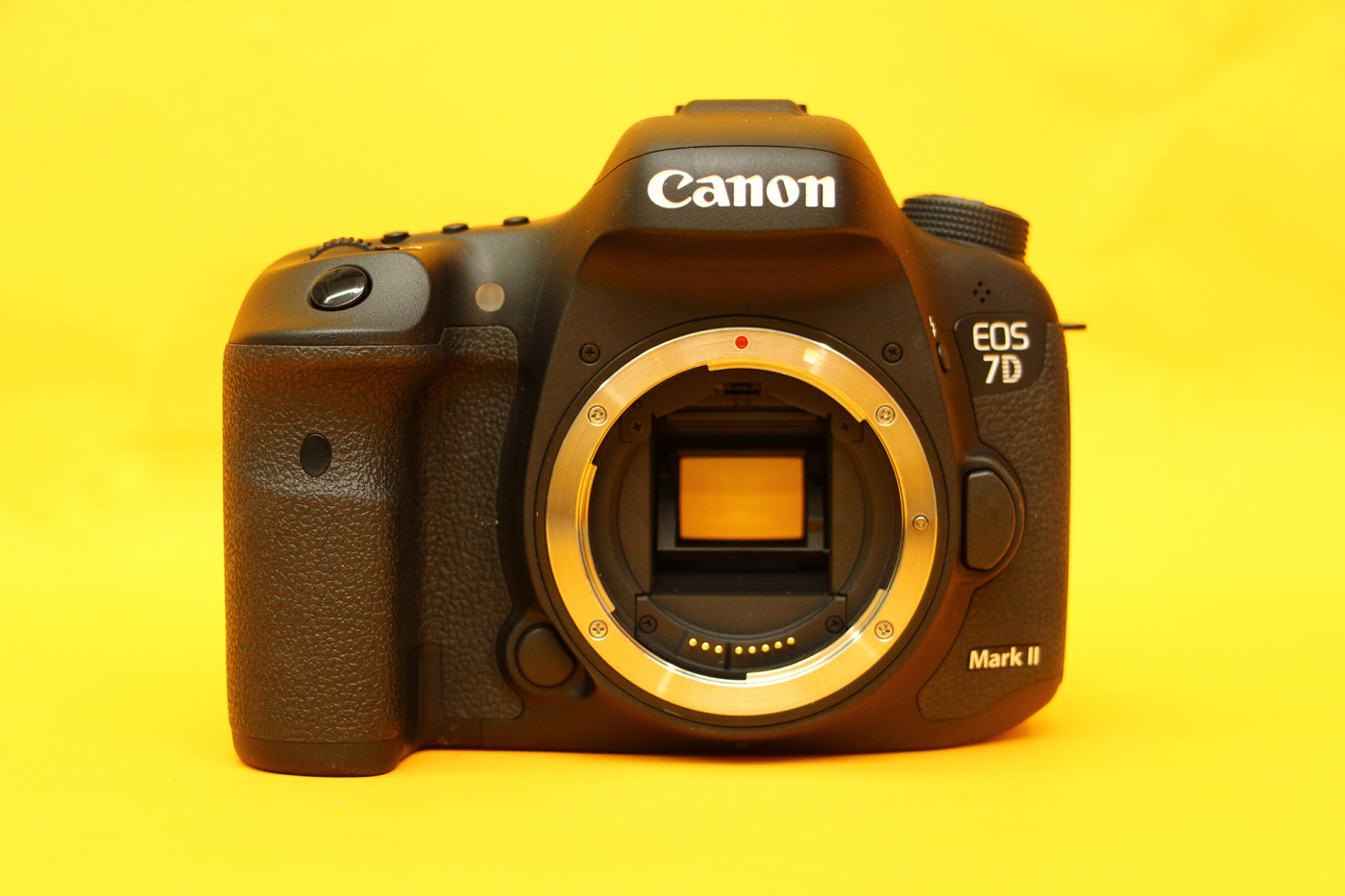Here at Germany’s fabulous Photokina, Canon’s top of the line prosumer APSC DSLR has been finally updated – whoo-hoo! It’s been a long and lonely five years and much has changed in the camera and video landscape but what does that mean for a current 7D owner? Well looking at the standard sealed body of the camera I’d say nothing at all but taking a look under the hood you’ll find new processor muscle; say hi to the DIGIC 6, a whole army of video input and output features, and more cross-type hairs than a hedgehog’s back!
So let’s jump straight in and compare these two bad boys and their range of specs to see what’s new and what’s stayed the same over the past half decade.
| 7D Mark II (2014) | 7D (2009) | |
|---|---|---|
| Sensors | 20.2 MP | 18.0 MP |
| ISO Range | 100-12800 standard25600 expanded | 100-6400 standard12800 expanded |
| Movie options | 1080p/60/50/30/25/24MP4 or MOVAll-I, IPB, IPB-Lite | 1080pMP4 |
| AF points | 65 (All cross-type, center double-cross) | 19 (All cross-type) |
| AF tracking? | X | |
| AF in live view | On-sensor phase detection | Contrast detection |
| Spot-metering linked to AF point | No change | X |
| Maximum shutter speed | No change | X |
| Maximum shutter speed | No change | 1/8000th sec |
| Flash Sync speed | No change | 1/250th sec |
| Screen | 3.0″ 3:21,036,800 dots(720 x 480 px, RGB)(720 x 480 px, RGB) | 3.0″ 4:3920,000 dots(640 x 480 px, RGB) |
| Viewfinder | No change | 100% coverage1.0x magnification(0.63x in 35mm terms) |
| Continuous shoot | 10 fps | 8 fps |
| Buffer | 1090 JPEG31 Raw | 130 JPEG25 Raw |
| Storage | Compact flashSD/SDHC/SDXC | Compact flash |
| Weight (inc batteries) | 910g (2.0 lb) | 860g (1.9 lb) |
| Dimensions | 149 x 112 x 78 mm | 148 x 111 x 74 mm |
| GPS | Built-in | Optional |
| Wi-Fi | Optional | Optional |
So at a glance, you might say only the following are stand out reasons for current 7D owners to upgrade: A larger back screen, high res ISO sensitivity, more rapid fire shots and an upped spec on the sensor pixels. But look inside and you’ll see how the guts of this beast have been ripped out and replaced with a snazzy fully-featured photo-making engine.
Image Processor
The original Canon 7D featured dual DIGIC 4, five years later the 7D Mark II goes one better than all other Canon EOS cameras with its DIGIC 6 processor.
ISO
The default ISO range is 100-16,000, expandable up to 25,600 and 51,200 this takes it up from the 7D’s native ISO of 6,400, and maximum extended ISO of 12,800
Burst Mode
The 7D Mark II now shoots at 10fps which is pro camera speed. There is now an additional silent continuous burst mode at 4fps. The 7D Mark II’s buffer capacity also gets a considerable boost and can now shoot 31 continuous shots in RAW mode and an incredible 1,090 shots in JPEG. The new 7D Mk II uses an RGB metering sensor with approximately 150,000-pixels. The new metering sensor is better than those found in the 5D Mark III, offering only 100,000 pixels. The Mark II has also has 65-point all cross-type AF system, beating once again the 61-point, 41-cross-type system of the 5D Mark III.

Video
Videographers will now wax lyrical about the powers inside the 7DII it has so much detection and neat AF stuff and a line on compressions format ALL-! and IPB (normal and light) and that iTR stuff-intelligent tracking and recognition. My face goes blank on all this data and jargon, but my mate who works in a camera shop always tells me that Canon do the best video on DSLR’s by far. All I would say as a prosumer observer is there is no 4K here (compared to a GH4 or a NX1 from Samsung) however, the camera does allow for uncompressed video over HDMI so you can record and send a HD signal out with only the camera rear LCD being disabled in the process (but do I need this, as an enthusiast)?
Sealing and other bits and bobs
Weather sealing is up to four times better than the original 7D apparently (no chance to test but I am sure Kai will make a video). It has dual memory slots (CF and SD) and a fast USB 3.0. I must say one noticeable feature absent from this camera is built-in wifi which to me in 2014 seems a little odd. If anyone has any ideas why I would appreciate a comment on it. Other small bits are an anti-flicker auto exposure option for shooting under sodium or stadium light, a built-in Intervalometer, and a bulb timer for long exposures. Oh yes and 200,000 shutter fire guarantee. (does anyone know how long a life that is, for a normal user?)
Competitive landscape
All said and done, the 7D II puts this part of EOS range closer to the professional offering of the 5D III at times. It is a safe pair of hand as always with Canon and given they did not announce ANY new enthusiast video cameras at Photokina it seems all that all innovation in video on DLSRs will be packed into this range from now on. For my liking the 7D seems a little bulky and perhaps heavy compared to say a GH4 and the new kid on the block Samsung NX1 which has been brought to the market to compete head-to-head with this camera (from what I saw at Photokina the new NX1 is a formidable and tech heavy beast). In the end though, it seems fair to say that the upgrade of specs inside this new and almost identical looking camera makes this a very attractive upgrade for power users of the previous model of the 7D. The future of photography will be about the software and processor power and for this boxy camera that remains true. If you are happy, know the 7D format well, and have a bunch of good Canon lenses; the sheer internal upgrade of specification inside the magnesium alloy should be enough to make you salivate wildly.

